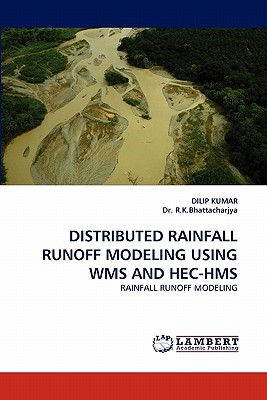
- We will send in 10–14 business days.
- Author: Dilip Kumar
- Publisher: LAP Lambert Academic Publishing
- ISBN-10: 3838341724
- ISBN-13: 9783838341729
- Format: 15.2 x 22.9 x 0.4 cm, softcover
- Language: English
- SAVE -10% with code: EXTRA
Distributed Rainfall Runoff Modeling Using Wms and Hec-HMS (e-book) (used book) | bookbook.eu
Reviews
Description
The rainfall runoff model is one of the most frequently used events in hydrology. It determines the runoff signal which leaves the watershed from the rainfall signal received by the basin. The present study develops an distributed approach to simulate the rainfall runoff process of a catchment. The catchment area has been divided in to the numbers of divisions equal to the numbers of rain gauge station. An lump model is also developed using average rainfall of the catchment. In case of lump model, average rainfall is calculated using thessian polygon method. In order to estimate runoff from rainfall events, loss rate or infiltration parameters for the basin have to be calculated, which is a basic input for further rainfall runoff modelling. The infiltration capacity of the basin depends on the land use and soil property. Therefore the estimation of infiltration parameters or curve number of the basin is made initially. An inverse model is formulated and solved for estimating the curve numbers for the lump and distributed models.
EXTRA 10 % discount with code: EXTRA
The promotion ends in 20d.17:52:40
The discount code is valid when purchasing from 10 €. Discounts do not stack.
- Author: Dilip Kumar
- Publisher: LAP Lambert Academic Publishing
- ISBN-10: 3838341724
- ISBN-13: 9783838341729
- Format: 15.2 x 22.9 x 0.4 cm, softcover
- Language: English English
The rainfall runoff model is one of the most frequently used events in hydrology. It determines the runoff signal which leaves the watershed from the rainfall signal received by the basin. The present study develops an distributed approach to simulate the rainfall runoff process of a catchment. The catchment area has been divided in to the numbers of divisions equal to the numbers of rain gauge station. An lump model is also developed using average rainfall of the catchment. In case of lump model, average rainfall is calculated using thessian polygon method. In order to estimate runoff from rainfall events, loss rate or infiltration parameters for the basin have to be calculated, which is a basic input for further rainfall runoff modelling. The infiltration capacity of the basin depends on the land use and soil property. Therefore the estimation of infiltration parameters or curve number of the basin is made initially. An inverse model is formulated and solved for estimating the curve numbers for the lump and distributed models.


Reviews